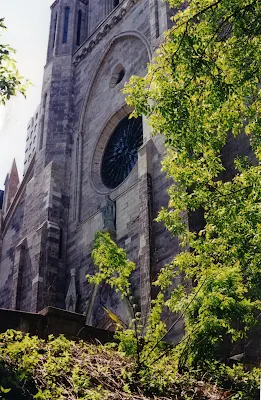The first issue of the new online periodical http://poetry-quebec.com/ is dedicated to the work of Louis Dudek. My article, "The First Person in Literature", on Louis, is available on the site. I add the following as a suggestion, a postscript, that we read a poet's writing, his body of work, and avoid those whose aim seems purely negative.
----------------------------------------------------------------------------------------------
Louis Dudek made an enormous contribution to literature in Canada as a poet, publisher, and critic. He helped many poets realize something of their creative potential by mentoring, publishing their work, and reviewing their books.
Robin Blaser describes Louis as being a “walking loneliness.” Even Louis’ friendship with Ezra Pound, for which he has been criticized for being overly naïve in his support of Pound’s work, is the friendship of a someone who would find approaching Pound difficult. It is this criticism of Dudek’s relationship with Pound, who Pound referred to as Dk/, that I would like to discuss here.
People will dig up whatever they can to criticize someone else, or invent something, or reveal their personal grudges in their comments. When he met Pound, Dudek was young and in awe of the older poet, as many of us would be if we were in his situation. Another visitor of Pound’s at St. Elizabeth’s Hospital, where Pound was incarcerated after the war, was Charles Olson. It took Olson several years of dealing with Pound before he finally made his break with him. Olson and Pound had personalities that were larger than life; alternately, Louis was introverted and introspective.
Assuming that Pound needed to be “disowned”, then perhaps Dudek, like Olson, should have disowned Pound much earlier in his career than he did. Dudek rightly identified Pound’s Cantos as one of the greatest works of 20th Century literature; however, he never supported Pound’s political views.
Dudek went to Pound to offer his support as a younger poet to the older poet that he admired for his poetry, just as Olson approached Pound for the same reason. To find one’s own voice, as a poet, it is necessary to assimilate something of the work and vision of the poets who come before us and that we admire in our youth. Both Louis and Olson assimilated in their work what they learned from Pound, and both poets eventually found their own distinctive poetic voices. Pound’s poetry helps inform something of Dudek’s work, just as Pound’s poetry helps inform something of Olson’s work, but the majority of both Dudek’s and Olson’s body of work is original and beautiful, for instance Dudek’s Atlantis and Olson’s masterpiece The Maximus Poems.
Dudek’s respect for Pound is that of an introverted person for the elder poet who had accomplished more in his writing career than just about any other poet in the 20th Century. However, Dudek was not without serious critical reflection on Pound: Louis confided to me that despite having taught Pound’s work for over thirty years he never convinced anyone to share his enthusiasm for Pound; as well, he accepted that Pound was "mentally ill", as others have diagnosed, but which in no way disqualifies Pound’s creative work. Louis would always direct his students to read Pound’s work, The Cantos, for themselves, to go to the source, and not get hung up on what others are saying.
Although I saw Louis only infrequently in the 1990s--at poetry readings at McGill and a group of us went to dinner at Ben's Restaurant after the readings with Louis--I was kept informed of how he was doing by Sonja Skarstedt, who did so much for Louis during that time. Sonja, who is a tireless worker for poetry, both writing her own work and publishing poets with Empyreal Press, also published Louis’ work in his final years.
I remember when Louis died in 2001, leaving the reception after the funeral, walking into the cold dark March evening, and feeling an incredible emptiness, knowing that an important person in Montreal, a city of poets, was Louis Dudek and that he was now no longer among us. I felt that a great man of letters had died.
What is the meaning of the poet’s life? Poetry demands everything from a person. It demands one’s time and one’s soul and being. The meaning of the poet’s life is his writing, and this means his body of work. The message, then, is this: pay your respect to an elder poet, like Louis Dudek, by reading their body of work. Avoid the writings of those who would destroy a poet's reputation and memory. These people don’t know what motivated the man, who he really was, or his future place in literature.




































